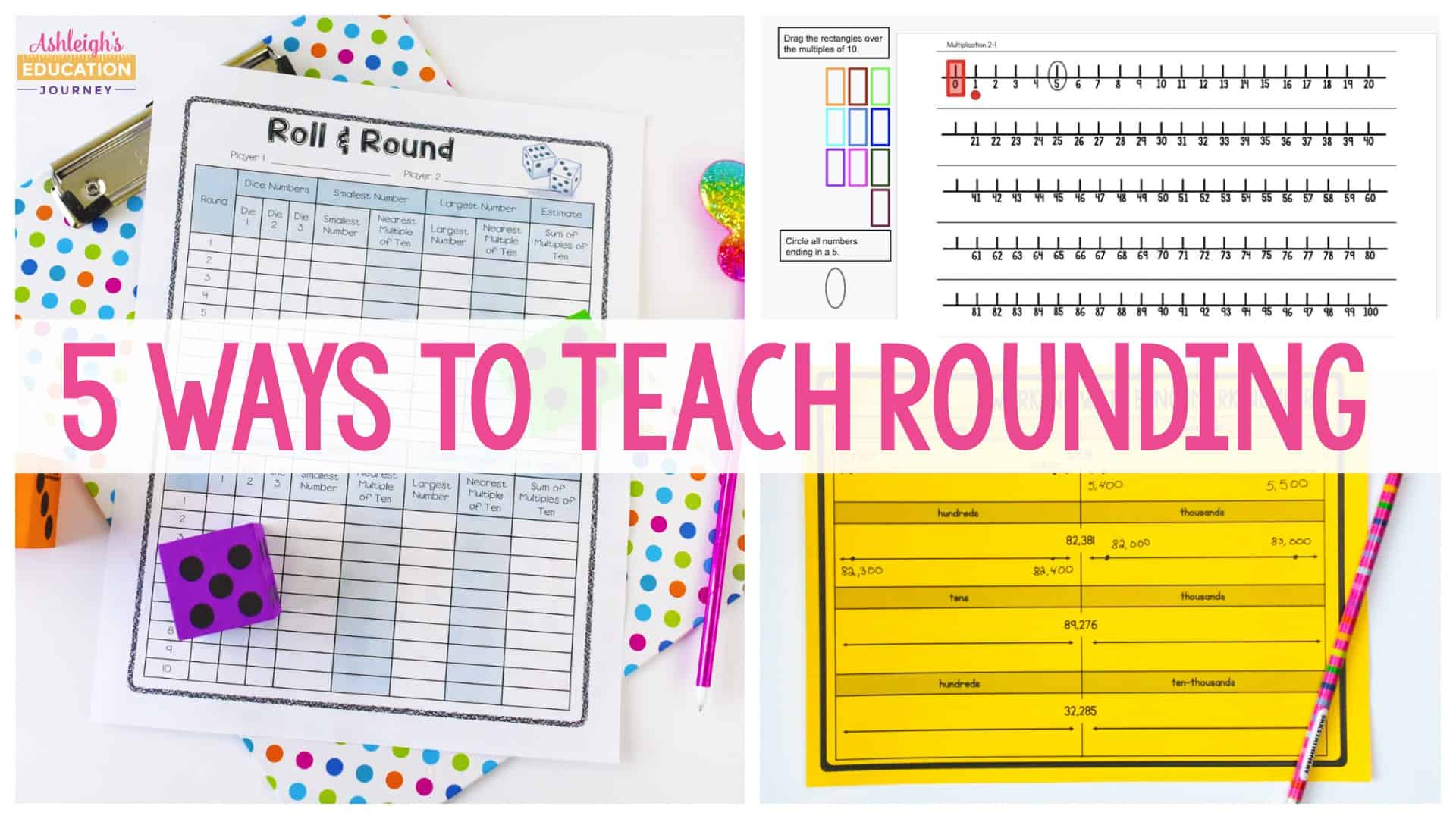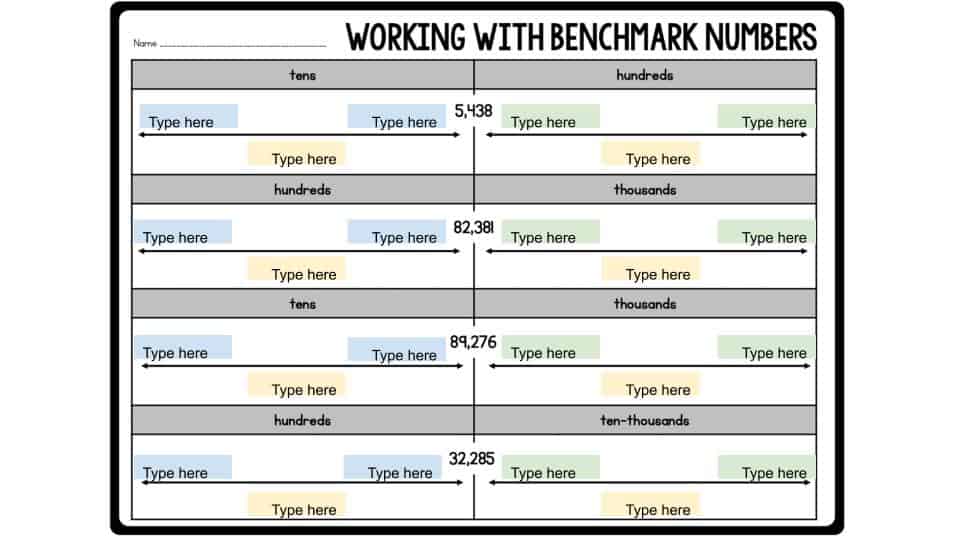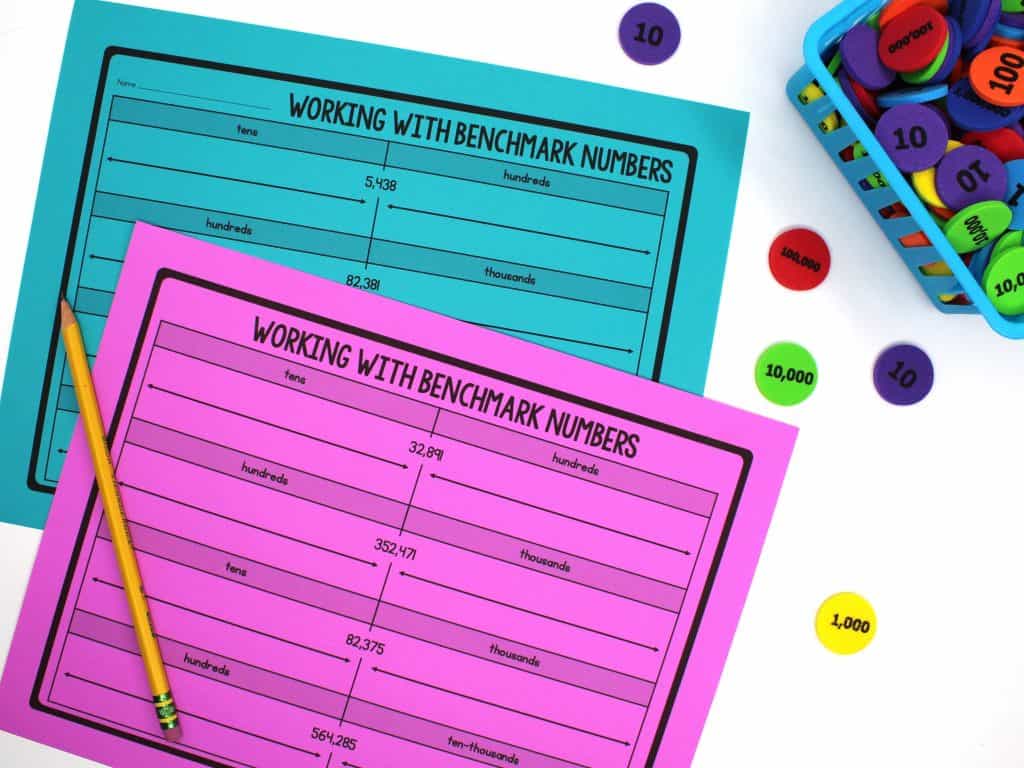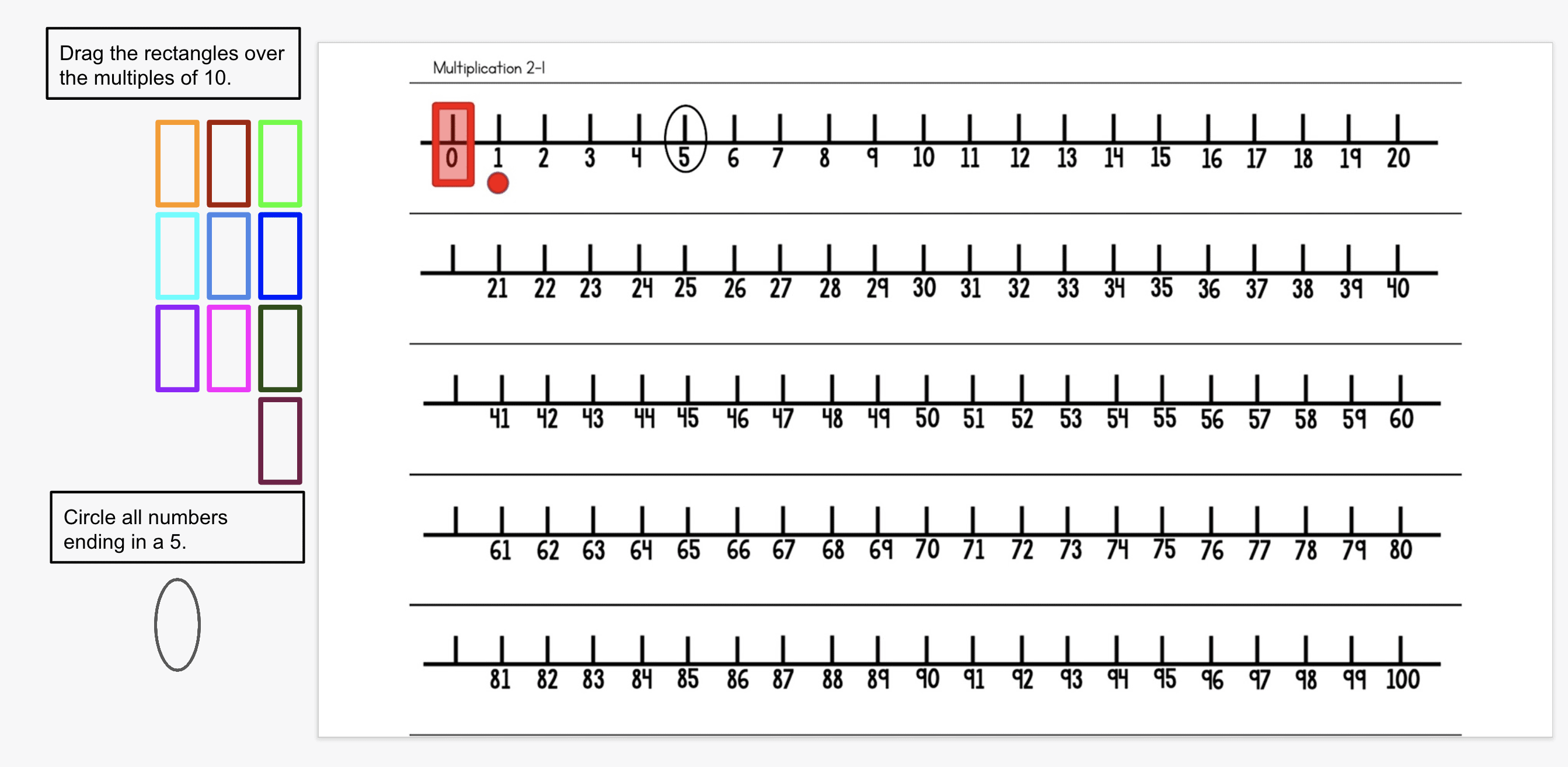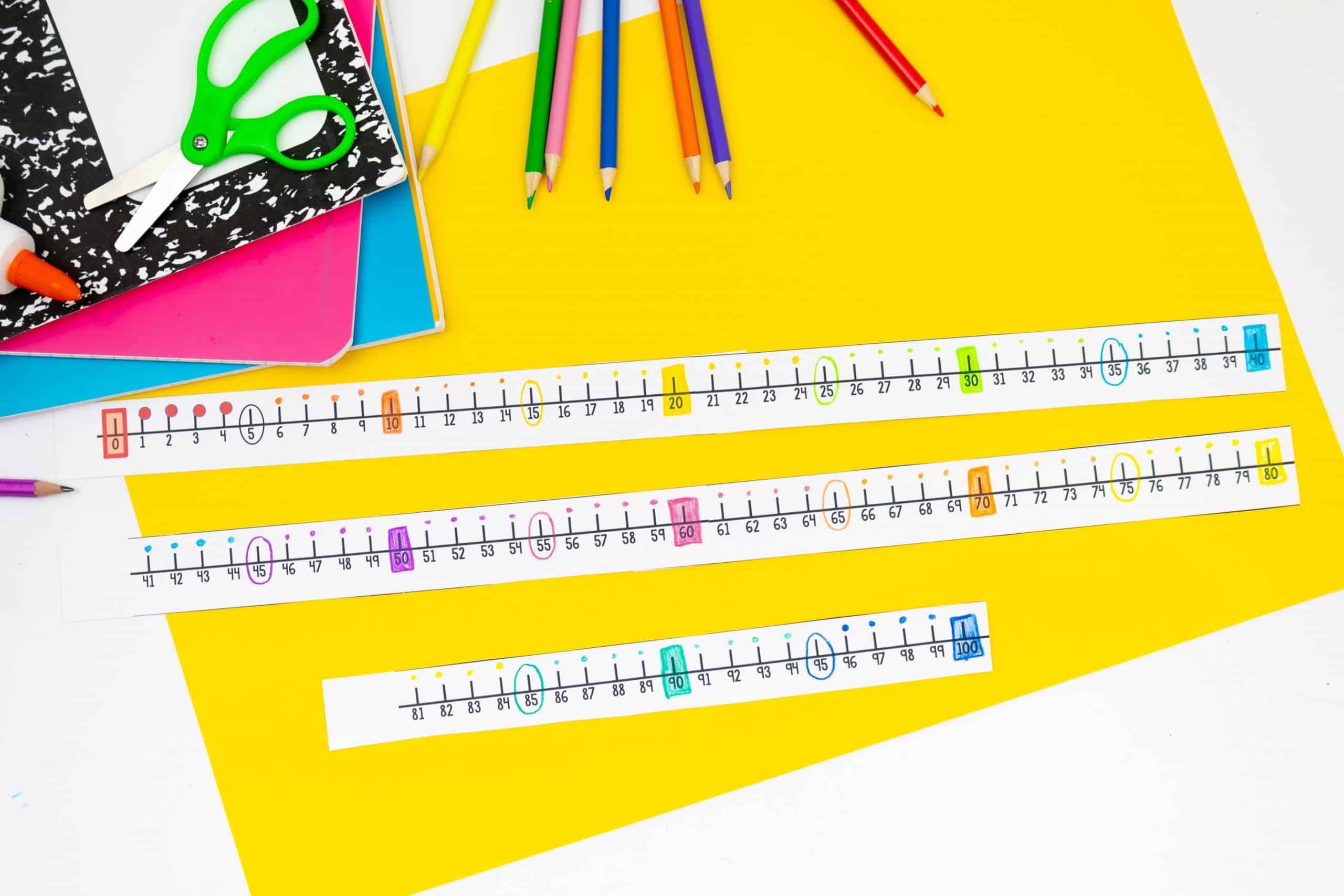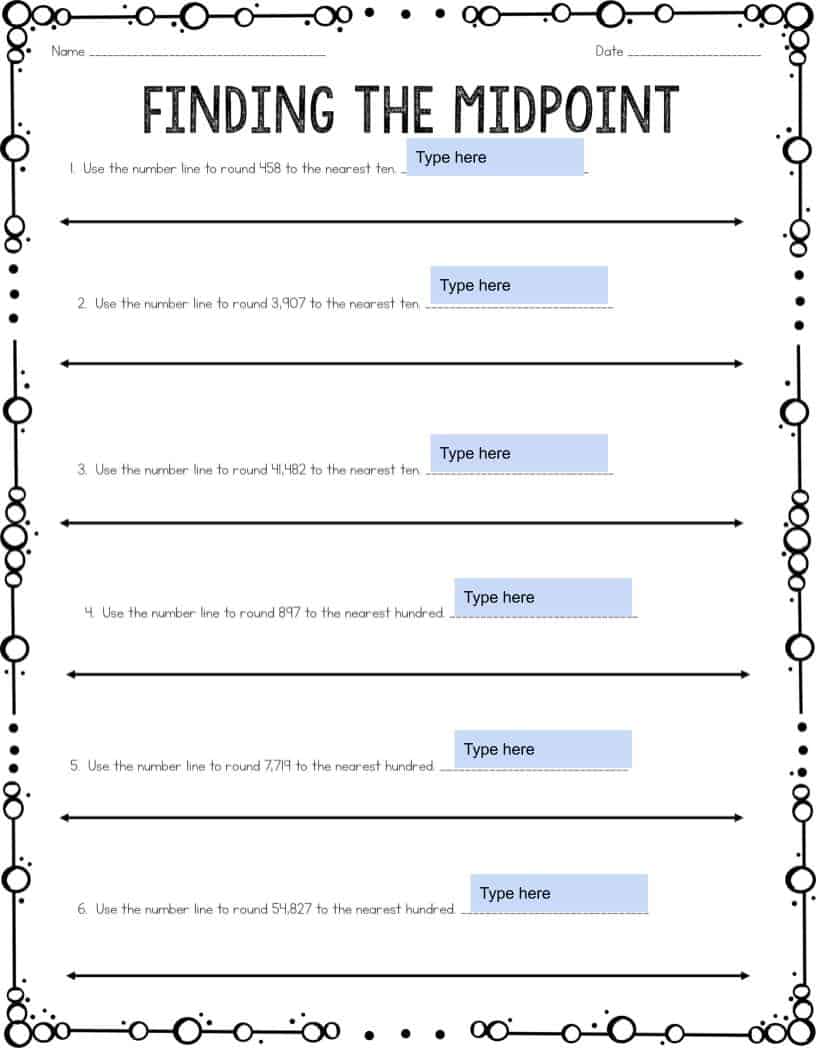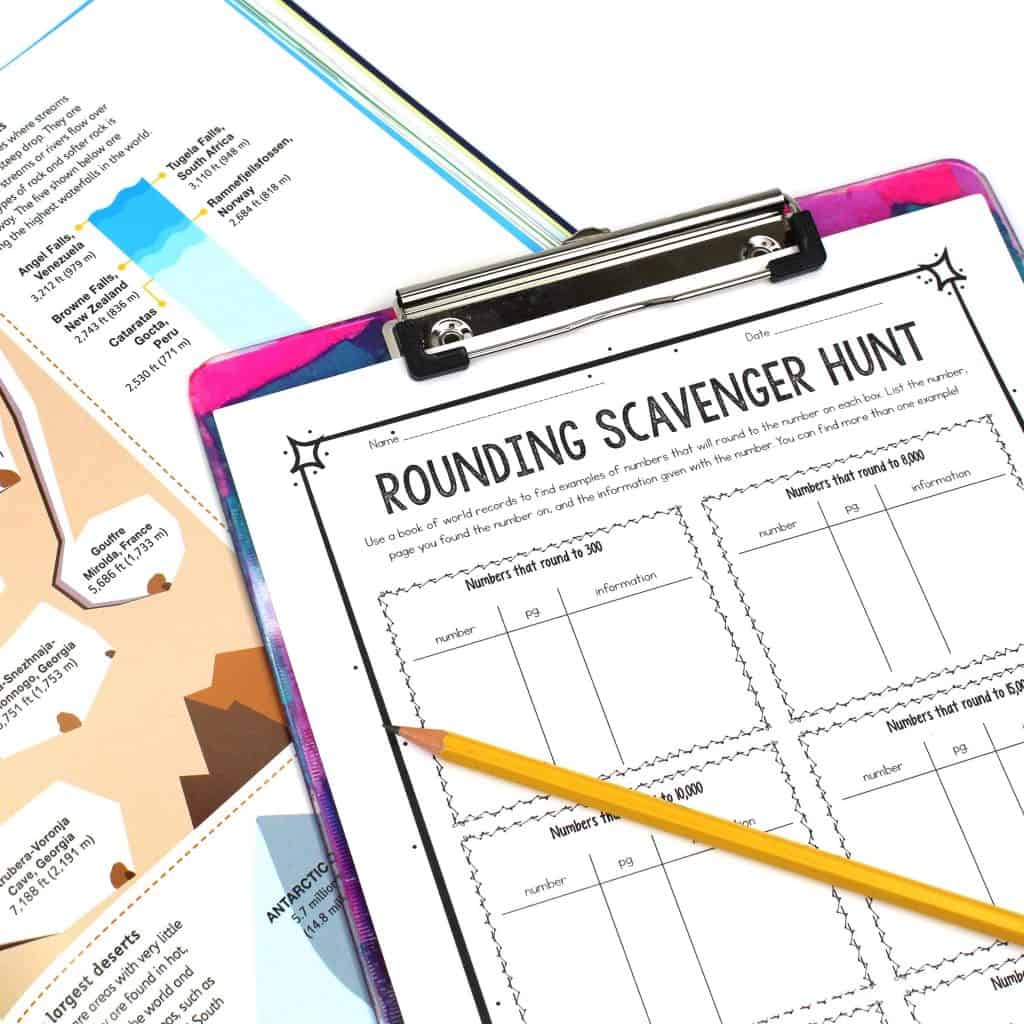Rounding to the nearest whole number is one of those math topics that is instinctive and easy for some students, while incredibly difficult for others. There’s typically a handful of students who initially appear to “get it” but continue making the same errors, due to the fact they’ve just memorized a procedure. Typically, students who are most successful with rounding to the nearest whole are students who have developed number sense.
These lessons hare ways to help teach rounding to the nearest whole number to students so they can continue to develop their number sense and how to round to any place. You can find these lessons in my 4th Grade Place Value Unit and in my 3rd Grade Rounding Unit. Since place value plays an important role in this unit, it’s much easier to teach rounding to the nearest whole number after teaching place value. You can find ideas for teaching place value in this blog post.
Benchmark Numbers
To help students develop a conceptual understanding, have students round to the nearest whole number using a number line. One of the hardest parts of rounding with a number line is getting students to understand what numbers to put on the number line (benchmark numbers). Therefore, benchmark numbers should proceed introducing rounding. This allows students to first focus on the concept of benchmark numbers.
Discuss benchmark numbers and why benchmark numbers are important. During this conversation, it’s important for students to recognize that benchmark numbers can change. For example, if I wrote 258 on a number line, the benchmark numbers could be 250-260 or 200-300 or 0-1,000.
Then have students add benchmark numbers to open number lines. When I teach this lesson, we often complete the first page together, and I observe students as they work on the first page. Some students complete the second page independently, while I work with others in a small group.
You can see how student find two sets of benchmark numbers for each included numbers. This is designed to build students’ flexibility with their reasoning about benchmark numbers.
Rounding to the Nearest Whole Number – Interactive Number Line
When students are ready to move forward in the next lesson, explain that we use benchmark numbers to help us round. Ask students to explain what it means to round and clarify and address any misconceptions.
To develop the concept of rounding have students build an interactive number line. To create the number line have students cut out the number line pieces and tape them together to form one long number line to 100. Students first draw a rectangle around the multiples of ten and color in each rectangle with a different color. Then have students circle all numbers such 5, 15, 25, etc. They should notice that the number is halfway between the two benchmark numbers. Explain that we round these numbers to the next benchmark number. After students shade in the rectangles, they should use the same colors to draw a dot underneath each number on the number line. The color of the dot should indicate to which benchmark number that number rounds.
Finding the Midpoint
After students experience the interactive number line, model how to use a number line for rounding to the nearest whole number. Remind students that the benchmark numbers on the number line change when the place students are rounding to changes. Guide students into understanding that it is not necessary to write each number in the range on the number line. Instead, students can label each multiple and the midpoint to help them round numbers to any place.
Notice that students are working with an open number line where the benchmark numbers are not included. You may also have some students try to find half of the given number, rather than the halfway point between the two benchmark numbers, so watch carefully for that misconception.
Games
Never underestimate the power and purpose of games in math instruction. Many students need additional time, so this is a great time to interject a fun game that allows you to remediate as needed. Students practice rounding to the nearest whole number (tens, hundreds, or thousands) in this activity.
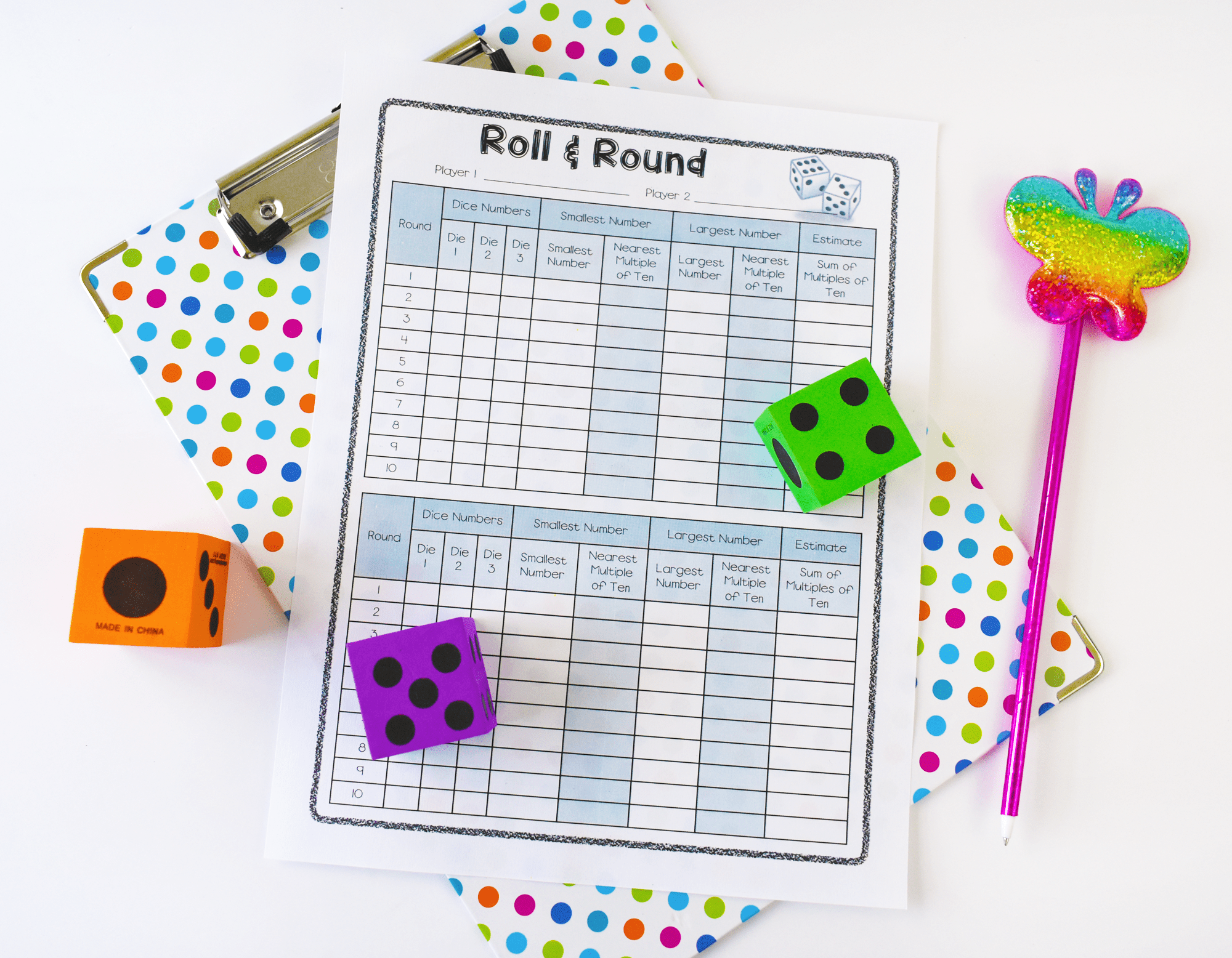
Rounding to the Nearest Whole Number – Application
I’m always looking for ways to integrate content areas, so this rounding to the nearest whole number scavenger hunt fits the bill! Students can complete this activity individually, with a partner, or with a small group. Distribute any reference book such as an Almanac or Guinness World Book of Records. If possible, be sure that all students are using the same book, as this will make your closing time a bit easier, since all students will have the same reference and information. Have students use the books to find examples of numbers that round to various benchmark numbers. This is a bit challenging when rounding to the nearest whole numbers, because a lot of content includes decimals. So, if you teach decimals later in the year, you can use this again and include decimals.
Rounding to the Nearest Whole Number – Math Notebook
During our rounding lessons, students add this page to their math notebooks. Students can later refer to this for extra support or as a reference. You can find the 4th Grade Notebook here.
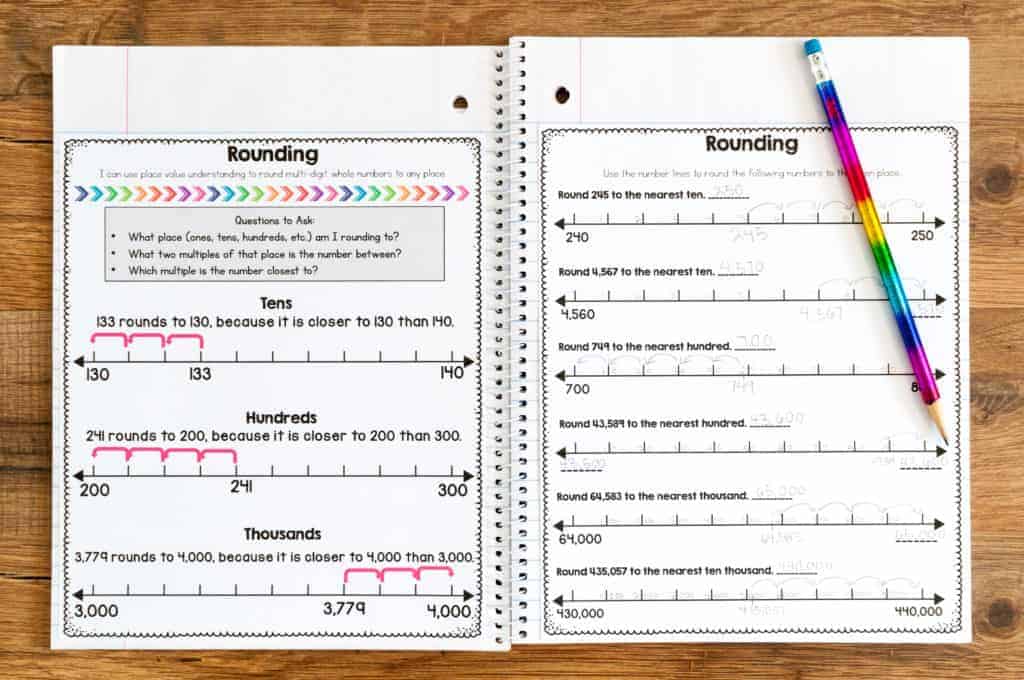
Rounding Practice
Sometimes students need extra practice, which is why I created these bonus rounding pages. I use them in small groups to help students who need extra support. You can download the files FREE here.
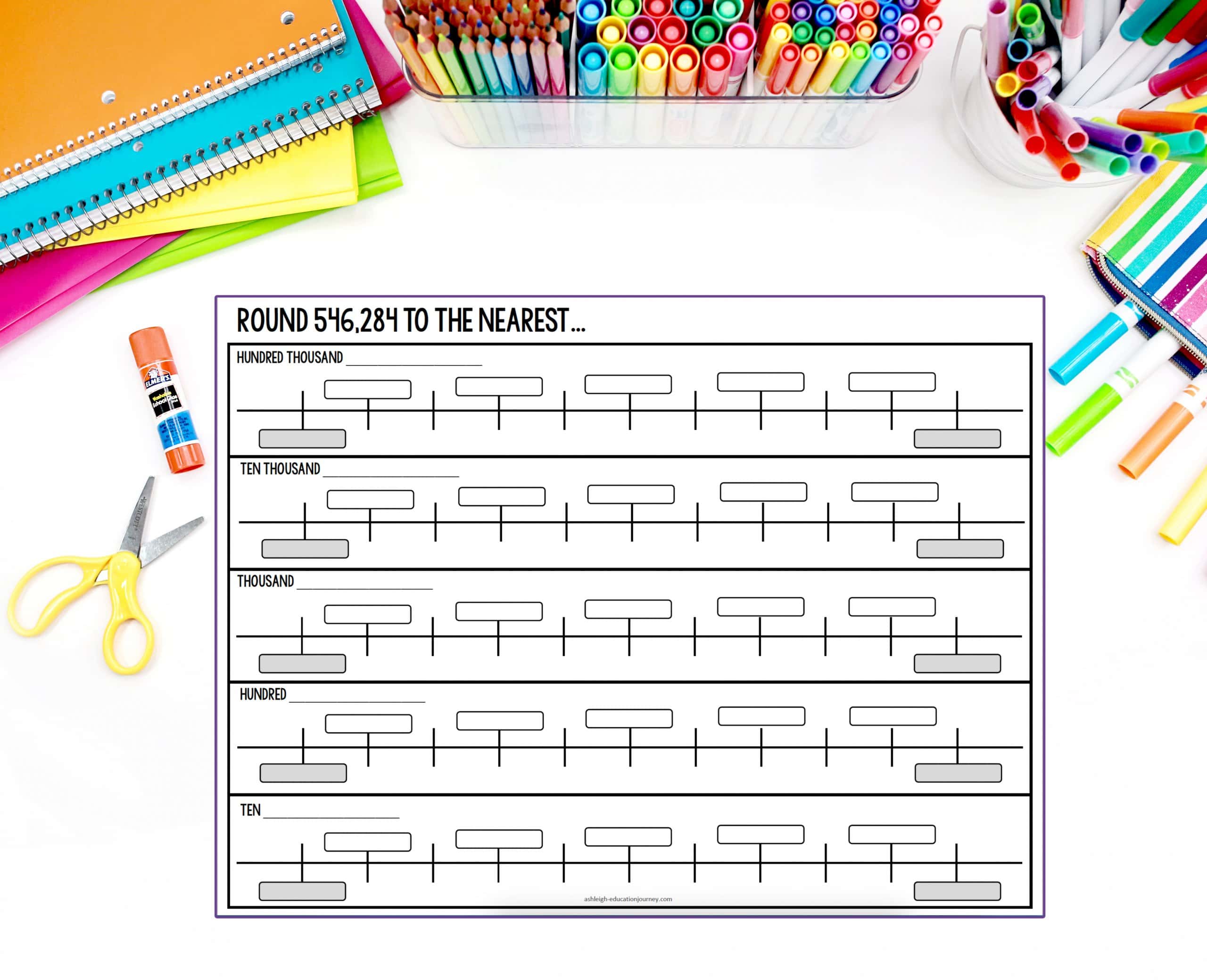
Hopefully, you’ve found a few new ideas for rounding to the nearest whole number! The lessons were from my 3rd Grade Place Value Unit or my 4th Grade Place Value Unit.

